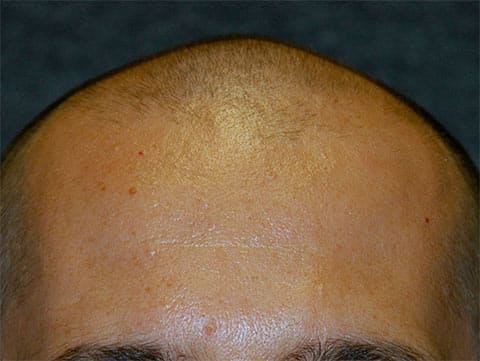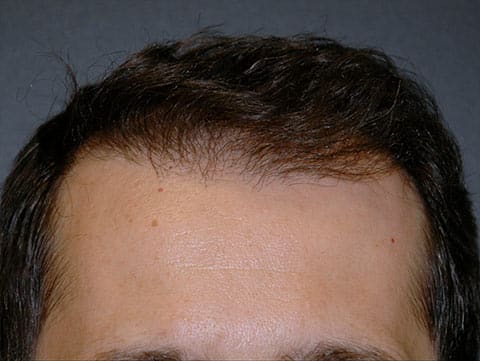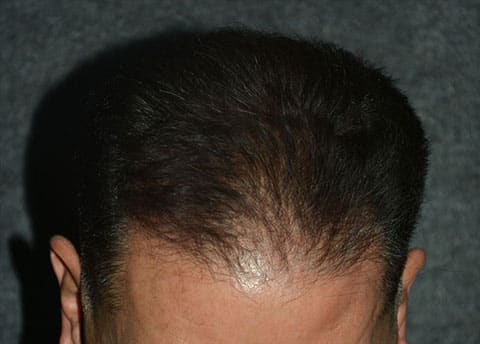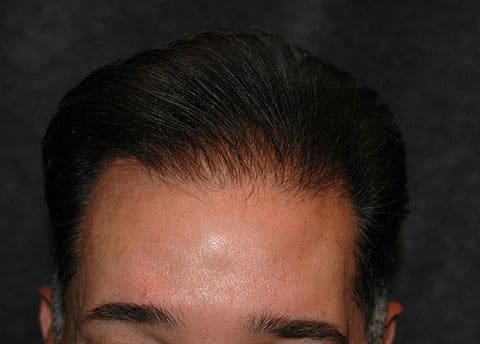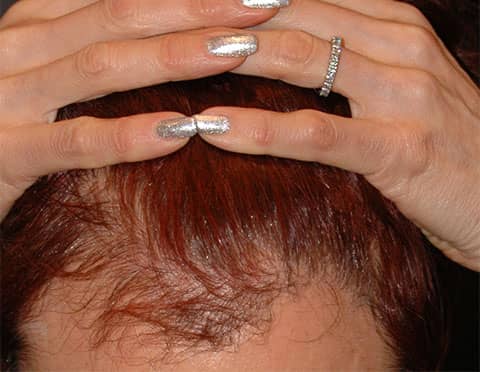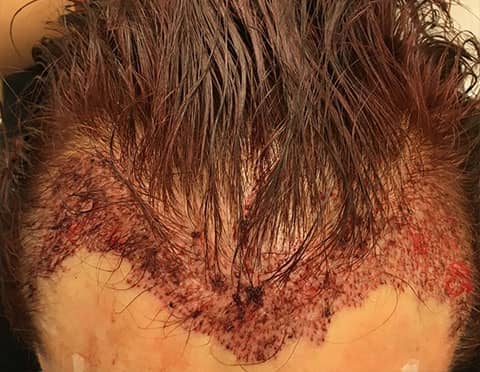Hair Transplant NYC

Strategic Options for Hair Transplants
Hair loss or thinning hair can be devastating, especially when it happens early in life. It can impact your confidence both socially and professionally. What if there was a safe, effective way to revitalize your appearance by restoring a healthy head of hair and improving your quality of life? Hair transplantation in NYC with Dr. Jacono is an innovative and transformative solution for thinning hair that is worth exploring.

Choosing a Surgeon: Why Choose Dr. Jacono?
Choosing a surgeon is a crucial part of ensuring your hair transplantation and hair restoration is performed perfectly and achieves results that are truly satisfying. Dr. Jacono has been performing hair transplantation surgeries for more than 14 years. He is a member of the International Society of Hair Restoration Surgeons (ISHRS). Dr. Jacono underwent rigorous training in the latest methods of follicular unit hair transplant (FUE), completing an advanced one-year fellowship program with the American Academy of Facial Plastic and Reconstructive Surgeons.
Dr. Jacono is a double board-certified surgeon, certified in facial plastic and reconstructive surgery by the American Board of Facial Plastic and Reconstructive Surgery and the American Board of Head and Neck Surgery. He has been listed as one of the best facial plastic and hair transplantation surgeons in New York by US News and World Report and in the prestigious Castle Connolly’s Guide to America’s Top Doctors.
What is Hair Restoration?
Hair Restoration in NYC is the medical process of stimulating new hair growth with a range of regenerative treatments, topical or oral medication for hair growth, or by hair transplantation, the method of transplanting healthy hair follicles to thinning or balding areas. Hair restoration
may include medications, hair transplantation, or a combination of both.
Hair transplantation is performed by surgically removing healthy hair follicles from the back of the scalp and placing them in areas marked by hair loss, typically on the top and the front of the head. Once transplanted, these donor follicles continue to grow new hairs over the course of the patient’s life.
Hair Restoration vs. Hair Transplants
Hair restoration refers to all the possible methods available on the market to provide a healthy, youthful-looking scalp full of thick, luxurious hair. These may include surgeries such as hair transplantation, as well as non-surgical methods such as PRP injections and medications.
Hair transplant refers to the process of extracting donor hair from follicle-rich areas of the scalp and implanting them in areas where the hair is thinning or is completely gone. This can be done using FUT (Follicular Unit Transplant), FUE (Follicular Unit Extraction), or NeoGraft, which is an automated form of FUE.
What Causes Hair Loss?
Since hair is always in the process of growing, a person can lose up to about 100 hairs a day without it being noticeable. If the hair follicles are compromised, however, new hair is not replenishing the lost hairs, and over time the scalp will thin or go bald.
Hair loss can be the result of many different factors, including the following:
- Genetics
- Hormonal imbalance
- Pregnancy
- Menopause
- Aging
- Scalp infection
- Medical conditions
- Medications and supplements
- Stress
- Poor nutrition
- Inflammation
- Tight hairstyles

Am I a Candidate?
Candidates for hair transplantation are both men and women who are experiencing hair loss and would like to restore a healthy, thick head of hair. Ideal candidates should meet the following physical requirements:
- Are generally in good health
- Do not smoke
- Have significant hair loss or thinning hair
- Enough hair remains for grafting in the donor areas at the back and sides of the head
- Do not have chronic or severe health concerns
About the Hair Growth Cycle
Hair Growth Occurs in 4 Stages
- Anagen phase – The anagen phase is the growth phase. Hair grows about half an inch per month (more in the summer). The length of your hair will be determined by your genetics and overall health. Some people of Asian descent can grow as much as 36 inches of hair over the course of 7 years!
- Catagen phase – After the anagen phase, your hair begins the catagen phase, lasting about 10 days in total. During this period, the body signals to the hair follicles to stop the growth process.
- Telogen phase – The telogen phase is a resting period that typically lasts three months. 10-15% of hair follicles are in the telogen phase at any given time. New hairs begin pushing out the old, dead hairs.
- Exogen phase – This is the shedding phase of hair growth, during which 50-150 hairs fall out per day. After the exogen phase, hair follicles return to the beginning of the cycle, the anagen phase.

Areas of Hair Restoration
Hair loss treatments are not only for the scalp. Hair loss can affect other areas, such as the eyebrows, and this can be reversed with our hair restoration treatments. Our modern, effective techniques for hair restoration can stimulate hair loss in the following areas:
- Head
- Beard
- Eyebrows
- Sideburns
Recovery / Post-Op Instructions
After the transplant, expect a few days before the red marks from the transplant scab over. You may experience some minor crusting on the scalp, which can be removed during a shampoo several days after your appointment. There will be some swelling, pain and soreness at both the transplant site and the donor area. Cool packs and over-the-counter pain medication can effectively help with this.
Downtime
FUT hair transplantations require about two weeks of downtime. There is no significant downtime after hair transplantation with FUE or NeoGraft. Patients will be able to return to work or their normal activities and routine the day after their hair transplantation treatment. It is important to avoid strenuous exercise and heavy lifting for 7-10 days post-op.
Risks
The FUT method of hair transplantation includes a higher risk because it includes an incision at the back of the head. Risks include infection, excessive bleeding, or scarring. FUE hair transplantation or NeoGraft is very low risk. The chance of complications is very low because only a small wound is created as the follicles are removed. These close and heal quickly.
What are the Benefits of Getting a Hair Transplant in NYC?
Improved appearance: Hair restoration can significantly improve a person’s sense of confidence in how they look, making them more secure and successful in everyday interactions and giving them a new lease on life.
Hair transplants have long-lasting results: Unlike topical hair serums, medications or wigs, hair transplant results are a permanent, hassle-free solution for thinning hair or balding. The procedure makes it easy for you to just go about living your life to the fullest, no longer having to wear hats or avoid swimming.
High rate of patient satisfaction: Hair transplantation is known as a safe, effective, and successful method of replenishing lost hair. The procedure can help to remedy balding, receding hairlines, thinning hair, and bald spots permanently.
Low maintenance: Unlike creams, serums, injections, pills, or special shampoos, hair transplantation need only be undergone once with long-lasting results, making it among the most low-maintenance hair restoration treatments available. You will be able to brush, comb, style, and wash your transplanted hair just as you would your original hair.
Cost-effective: While hair transplant might require more upfront costs, in the long run, it is less expensive than other types of hair restoration that require continuous payments for recurring products or in-office sessions.
Additional benefits of hair transplantation include the following:
- Natural-looking results–new hair follicles integrate seamlessly with the existing hair</
- A low-risk procedure with minimal complications
- Only requires local anesthesia
- Minimally invasive–no incisions are required
- Short recovery period–most patients can return to work within a week
- Achieves continuing, thick, natural hair growth in thinning areas
- Leaves donor sites intact with thick, healthy hair
What to Expect During the Procedure
Before your hair restoration procedure
Your journey to hair restoration starts with a private consultation. At Hair Restoration New York, every procedure is 100 percent customized and performed with precision and artistry to meet your needs. During your consultation, Dr. Jacono will examine your hair and scalp and work with you to understand your goals and determine the best course of treatment and transplantation that will achieve the full, healthy head of hair you want to achieve again.
Avoid alcohol and do not smoke for at least two weeks prior to your hair transplantation. Arrange for a family member or friend to take you home after your treatment is complete. When you arrive for your treatment, wear loose, comfortable clothing so that you can relax during the procedure.
During your hair transplantation procedure
We will begin by applying a local anesthetic to numb the donor and recipient areas of your scalp. The recipient sites on your scalp will be outlined to show the new hairline and angle of the hairs, matching the natural angle and hairline you had before. This ensures your transplanted hair grows naturally and integrates well with your existing hair. This achieves a natural-looking, healthy appearance.
During the FUE or NeoGraft procedure, the healthy, thick hair follicles are harvested one by one from the determined donor sites at the back and sides of the head. The remaining hair in the donor sites appears full and thick–no patches or scars are left behind. The harvested follicles are then inserted into the balding or thinning areas.
The procedure will require several hours to complete. Based on the extent of restoration required, the time period may be between four and eight hours. You will be seated comfortably during the procedure.
After your hair transplantation procedure
You will be able to return home with a family member or friend once the transplantation is complete. Most patients can sleep normally and feel well, requiring only over-the-counter medication for any required pain relief.
You will experience the transplanted hairs shedding around two to four weeks after surgery, but the follicles will remain behind. Over the following months, your healthy, full hair will grow back. It may take up to 3-6 months to witness the full cycle of hair growth, with your outcome continuing to improve over 12-15 months post-op.

How Much Do Hair Transplants Cost?
The cost of hair transplantation is an essential consideration for anyone seeking hair replacement options. The cost of a procedure is as individual as the patient and his or her hair loss. The cost of your hair transplant procedure is determined on a “per graft” basis according to your individual hair replacement needs.
Follicular unit extraction FUT is more expensive per graft than when a thin strip method is used to remove the hair follicles in a strip of scalp and then dissect them under the microscope. The cost of your hair transplant depends mostly on how many grafts you need, but there are many factors to consider for a successful hair transplantation procedure. Generally, hair transplant costs can range anywhere from $4,000 to $20,000.
Financing
Many patients find financing a convenient, affordable way to get the hair restoration procedure they want right now. Financing options are available through third-party credit agencies. Dr. Jacono is not affiliated with any of these agencies and does not make recommendations for or against any of them. His staff will help you apply and qualify through Chase HealthCare Finance, CareCredit, and other organizations they work with.
FAQ
Will my new hair require special care?
Maintenance for your newly transplanted hair will be about the same as with your older hair. The new hair can be washed, dyed, cut, shaved or styled as you wish.
Is hair restoration painful?
Some clients compare hair transplants to a routine dental checkup in terms of discomfort levels. The doctor can always provide you with pain medications, but most clients don’t need them for more than a few hours following their procedure.
Will there be scarring after my procedure?
After Neograft or FUE, there is no visible scarring. After FUT, there is a linear scar on the scalp where the hair was removed.
How long do the results last?
After Neograft, results last for one to two years. After FUE or FUT, the results can be considered permanent, but many patients opt for having another treatment after ten years or so, as other hairs in the area may thin.
Can I get a hair transplant if I have alopecia?
Patients with alopecia can successfully be treated with hair transplant procedures.
How soon after a hair transplant treatment can I dye my hair?
It is best for you to wait at least two weeks after your hair transplant to color the hair, just to ensure the proper amount of healing ensues before adding any chemicals into the mix.
What is the success rate of hair transplants?
The success rate for hair transplantation is 90-95%
Can I wear a hat after my procedure?
Wait at least ten days before wearing a hat or a cap, as this is the period of time it takes for transplanted grafts to take root in the balding areas.
Can women get hair restoration?
Yes, hair restoration works effectively for both men and women.

